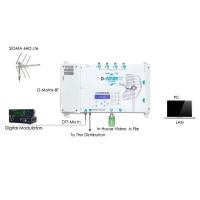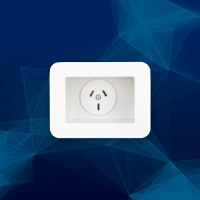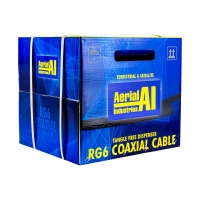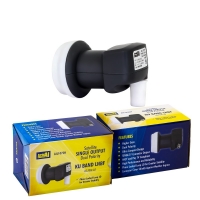Terrestrial Compact Headend with 8 TV Tuner In / 8 DVB-T Output MUX
A compact Digital Television signal processing and management headend with applications beyond hospitality and Multi Dwelling Unit markets.
It receives up to 8 x DVB-T, DVB-T2 or DVB-C digital input multiplexes, decrypts HD and SD program contents through Pro CAMs and remodulate to 8 'customised' DVB-T 2K outputs.
Allows the installer to freely choose encrypted and Free Terrestrial TV programs from any input, sidestepping any broadcaster strategic program reallocation issues. D-Matrix-8T allows deployment of many digital programs across your coaxial network.
- Multiple TV Inputs: 8 x DVB-T2 / T or DVB-C TV tuners connect in pairs to the four F connector coax inputs.
- Multiple TV Outputs: 8 x DVB-T (2K) output muxes (two sets of four adjacent channel digital modulators each).
- Multiple CI Slots: 2 Common Interface slots permit on board decryption of secured program.
- "Matrix Technology": 8 DVB-T digital re-modulators: each of two digital modulators groups can be set in three different working modes: single, twin or quad to maximise headend management flexibility.
- 'Mux-ad-Hoc': create output muxes with programs selected from the 8 input TV multiplexes. Manage each muxes descriptor parameters (ONID, TSID, NetID etc.) and each program inside the mux (LCN, SID, PID & Program name).
- Two groups of adjacent digital modulators in DVB-T or DVB-C "ad-Hoc" multiplexes can be generated --
- select content for distribution in channels anywhere across the TV bands.
- Web interface in D-Matrix-8T permits web based remote or local configuration and control. The onboard keyboard enables basic configuration.
- Auto Remapping permits program changes in Real Time without the need to re-tune all televisions on the network.
- Automatic Recovery Procedure (ARP2.0) guarantees service continuity in the event of bitrate overflow, thereby avoiding picture freezing. Programs restore sequentially when the global bitrate recovers .
- USB port for .ts video file playback, firmware upgrade and system configuration.
- DVB-T (COFDM) or DVB-C (QAM) output modulation is software selectable by the user.
Product Code: D-MATRIX-8T
Documents:

















